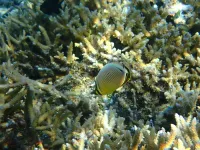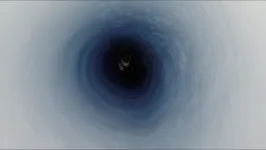(Press-News.org) BEND, Ore. – A researcher at Oregon State University-Cascades has received funding to develop a smart compost bin that tracks household food waste.
The project led by Patrick Donnelly, assistant professor of computer science in the OSU College of Engineering, seeks to make a dent in a multi-billion-dollar annual problem in the United States: More than one-third of all food produced in the U.S. goes uneaten.
“At every other step of the agricultural supply chain, food waste is tracked, measured and quantified,” Donnelly said. “However, approaches to measuring post-consumer food waste are costly, time-intensive, prone to human error and infeasible at a large scale.”
Donnelly and OSU colleagues Jason Clark of the College of Engineering and Quincy Clark of the colleges of Agricultural Sciences and Education are aiming to create a kitchen compost container that automatically measures household food waste.
“We’re adapting our design to accommodate consumers’ current behavior, using compost bins commonly distributed by waste utilities as a template,” said Donnelly, whose team is receiving $640,000 in funding. “When a user disposes of edible and non-edible food waste in the bin, our device prompts the user to describe the deposited items. The user’s note is then transcribed with automatic speech recognition and associated with a weight measurement of the items.”
Additionally, he said, the device will collect 3-D images and sensor measurements of the food waste, resulting in an “entirely novel dataset to enable and encourage future researchers to tackle the problem of food waste measurement with computer vision.”
This research is supported by the Foundation for Food & Agriculture Research and the Kroger Co. Zero Hunger | Zero Waste Foundation. Roughly 37% of U.S. food waste occurs in homes, according to the FFAR.
In an average year the United States – a country in which more than 10% of households are food-insecure – wastes more than $400 billion worth of food. Aside from economic inefficiency and the moral disaster of discarding food while many people go hungry, Donnelly said, that waste generates significant amounts of the greenhouse gases carbon dioxide and methane.
“There’s a familiar adage: You can’t manage what you don’t measure,” Donnelly said. “Our goal is to inspire future waste reduction by specifically quantifying, measuring and tracking the amount of food that home consumers send to compost.”
As part of the project, researchers will run a small pilot study, likely in spring 2024, he added.
“After we design the device, we will distribute them to study participants,” Donnelly said. “The purpose of the preliminary study is to test the technology and collect measurements and images for a dataset.”
At present this type of food waste research is performed by tasking small groups of participants to manually weigh their food waste and record the measurements in a journal, Donnelly said.
“Our solution would fully automate this process, enabling researchers to collect this data more accurately and efficiently,” he said. “Our work is a first step towards developing a fully autonomous, computer vision solution that would enable households to track the amounts and types of food compost waste they generate. With these personalized and data-driven interventions, we hope to inspire consumers to reflect upon and change their behaviors with respect to food waste over time.”
The Foundation for Food & Agriculture Research was established in the 2014 Farm Bill to increase public agriculture research investments, fill knowledge gaps and complement the U.S. Department of Agriculture’s research agenda. FFAR projects match federal funding with private funding with the aim of establishing collaborations and partnerships that advance actionable science benefiting farmers, consumers and the environment.
END
OSU-Cascades researcher explores AI solution for tracking and reducing household food waste
2023-05-02
ELSE PRESS RELEASES FROM THIS DATE:
Survival from cardiac arrest less likely in Asian American Pacific Islander communities
2023-05-02
DALLAS, May 1, 2023 — Science tells us that when a cardiac arrest happens, bystander CPR can double or even triple the chances of survival.[1] Asian American and Pacific Islander (AAPI) adults who experience cardiac arrest outside of a hospital setting have a substantially lower chance of receiving bystander CPR.[2] During Asian American Pacific Islander Heritage month in May, the American Heart Association, a global force for healthier lives for all, is asking people to “Be the Beat” for their family and learn Hands-Only ...
Your health is in your hands during American Stroke Month
2023-05-02
DALLAS, May 1, 2023 — Strokes can happen to anyone, at any age. In fact, globally about one in four adults over the age of 25 will have a stroke in their lifetime.[1] During American Stroke Month, the American Stroke Association, a division of the American Heart Association, as part of a nationally supported collaboration with HCA Healthcare and the HCA Healthcare Foundation, will teach people everywhere that stroke is largely preventable, treatable and beatable.
A stroke happens when normal blood flow in the brain is interrupted. When parts of the ...
Blocking a tiny RNA may forestall age-related bone and muscle loss, inflammation
2023-05-02
AUGUSTA, Ga. (May 2, 2023) – Inhibiting a tiny RNA whose levels significantly increase with age, along with problems like weaker bones and sagging muscles, may be a way to keep our bodies more youthful and healthy, scientists say.
MicroRNAs help regulate gene expression and consequently the function of our cells, and several, including one called microRNA-141-3p, have been implicated in the ills of aging, like increasing levels of potentially damaging chronic inflammation and that shrinking muscle mass.
“When we age in all these complications like chronic inflammation, muscle loss, bone loss, this microRNA is elevated,” says Sadanand ...
Fish thought to help reefs have poop that’s deadly to corals
2023-05-02
HOUSTON – (May 2, 2023) – Feces from fish that are typically thought to promote healthy reefs can damage and, in some cases, kill corals, according to a recent study by Rice University marine biologists.
Until recently, fish that consume algae and detritus — grazers — were thought to keep reefs healthy, and fish that eat coral — corallivores — were thought to weaken reef structures. The researchers found high levels of coral pathogens in grazer feces and high levels of beneficial bacteria in corallivore feces, which they say could act like a “coral probiotic.”
“Corallivorous ...
Do people and monkeys see colors the same way?
2023-05-01
New findings in color vision research imply that humans can perceive a greater range of blue tones than monkeys do.
“Distinct connections found in the human retina may indicate recent evolutionary adaptations for sending enhanced color vision signals from the eye to the brain,” researchers report April 25 in the scientific journal, Proceedings of the National Academy of Sciences.
Yeon Jin Kim, acting instructor, and Dennis M. Dacey, professor, both in the Department of Biological Structure at the University of Washington School of Medicine in Seattle, led the international, collaborative project.
They were joined ...
Organ transplant policies need an overhaul!
2023-05-01
INFORMS Journal Manufacturing & Service Operations Management New Study Key Takeaways:
Matching supply and demand of organs can provide broader sharing in a way that results in greater transplant equity.
By indiscriminately enlarging the pool of supply locations from where patients can receive offers, they tend to become more selective, resulting in more offer rejections and less efficiency.
The model accounts for the variation of “incidence of disease” (i.e., demand) and “availability of deceased-donor organs” ...
Scientists describe carbon cycle in a subglacial freshwater lake in Antarctica for first time
2023-05-01
TAMPA, Fla. (May 1, 2023) – Subglacial lakes that never see the light of day are among the least accessible frontiers of science, brimming with more tales yet untold than even the planets of our solar system. One thing seems certain: where there is water, there is life -- even if said water is at the bottom of a frigid lake, in pitch darkness, below more than a half mile of the West Antarctic Ice Sheet.
As reported in AGU Advances, scientists analyzed the chemical fingerprint of the ocean and microbes retrieved from sediments and water at the bottom of a subglacial ...
Sensor enables high-fidelity input from everyday objects, human body
2023-05-01
Images // Video
Couches, tables, sleeves and more can turn into a high-fidelity input device for computers using a new sensing system developed at the University of Michigan.
The system repurposes technology from new bone-conduction microphones, known as Voice Pickup Units (VPUs), which detect only those acoustic waves that travel along the surface of objects. It works in noisy environments, along odd geometries such as toys and arms, and on soft fabrics such as clothing and furniture.
Called SAWSense, for the surface acoustic waves it relies ...
DOE’s Office of Science Graduate Student Research (SCGSR) program selects 87 outstanding US graduate students
2023-05-01
WASHINGTON, DC – The Department of Energy’s (DOE’s) Office of Science has selected 87 graduate students representing 33 states for the Office of Science Graduate Student Research (SCGSR) program’s 2022 Solicitation 2 cycle. Through world-class training and access to state-of-the-art facilities and resources at DOE national laboratories, SCGSR prepares graduate students to enter jobs of critical importance to the DOE mission and secures our national position at the forefront of discovery and innovation.
“The SCGSR program provides a way for graduate students to enrich their scientific research by engaging with ...
Interactive 3D model recreates Old Man of the Mountain
2023-05-01
Twenty years after the Old Man of the Mountain collapsed, audiences around the world will now be able to explore the iconic symbol of New Hampshire through an online interactive 3D model created by Matthew Maclay, a graduate student in earth sciences at Dartmouth's Guarini School of Graduate and Advanced Studies.
The face-shaped granite formation on the northeast side of Cannon Cliff in Franconia Notch State Park fell off the cliff on May 3, 2003, drawing international attention and dismay in New Hampshire itself.
"People continue to have a very emotional connection to the Old Man of the Mountain—the state emblem of New Hampshire, so I am really excited that this 3D ...




